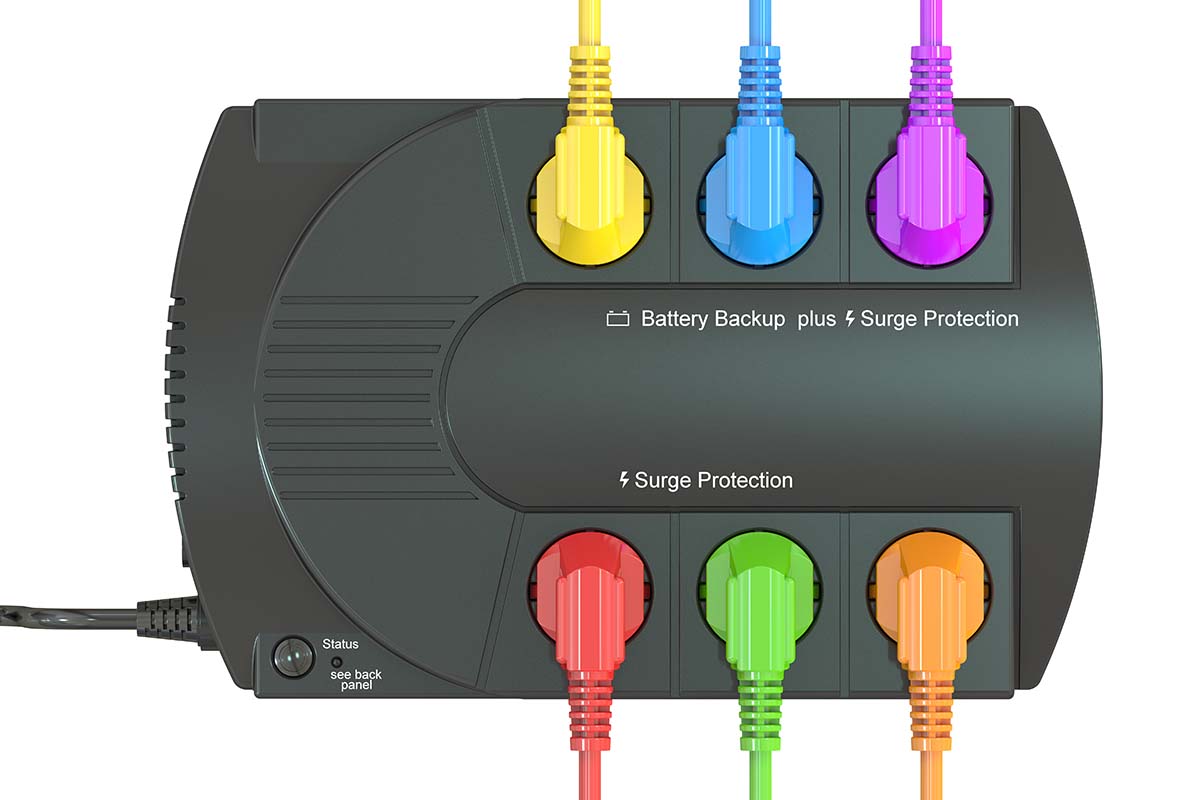Let’s face it. Even if you are already signed up with the best Retail Electricity Provider, your power may go out. It might be a half-second blip, or it might be several hours, but there is always a chance. Hurricane season and other weather events increase the likelihood of these events.
Most of us should be familiar with using surge protectors to safeguard our expensive and critical electronics. Do you also have a battery backup solution?
Every power blip threatens to bring down the Wi-Fi, which will interrupt your business call if you are working remotely, or kick the kids off an online game (which might not be a bad thing). Anything you don’t want losing power, for a few seconds or even a few hours, can be kept going with the proper battery backup.
A battery backup, commonly known as an Uninterruptible Power Supply (UPS) unit, ensures that connected electronics do not experience an outage when the main electricity source goes out. There are a few ways an UPS may accomplish this, but all you need to know is that a UPS has an internal battery which stays fully charged until an outage, at which point it keeps the connected devices running for a period of time.
UPS units come in several varieties, and knowing what solution is best for you can help save you money and frustration. Usage considerations range from home office to datacenter, with plenty of reasonably priced options for the average consumer.
Here are a few questions to get started:
- What do you want backed up?
- I recommend prioritizing critical devices, such as anything network related (modem, router, Wi-Fi hotspot, etc.), any desktop computer without an internal battery, cable box, and anything that uses little power and takes a long time to reboot.
- I do not recommend connecting the more power-hungry peripherals, such as external computer monitors (if possible), TVs, and gaming consoles. These devices pull more energy and may not be the best use of your UPS.
- How long do you want these electronics to stay powered in a blackout?
- This answer can range from a few minutes to several hours and will directly impact what you need (and the cost of the device).
- Note: there will be a balance between how much you back up and how long it stays going. A decent UPS should give you a reasonable amount of both, fortunately.
- Do you want a replaceable battery?
- The UPS internal battery will lose efficacy after several years of use, just as any other battery. Some manufacturers keep costs low by soldering the battery to the other components. If a battery is soldered you will have to replace the entire unit not just the battery.
- Most units do have a replaceable battery, which can often be purchased from the manufacturer or a third-party vendor.
- Just make sure you are aware of what option you are using.
- Do you need anything to automatically shut down if you lose power?
- Some units can send a power down signal to compatible devices in the event of power loss. As an example, this allows a computer to shut down properly, which can protect sensitive components such as hard drives.
- Note: if you don’t already account for this issue, you probably don’t need this feature.
- Where do you intend to shop?
- If you shop at your local electronics retailer, a representative should be able to answer questions about any specific model. It also never hurts to look up the model on your preferred search browser.
- If you purchase online, just make sure to read the reviews and be aware that returns are more difficult due to regulations around shipping large batteries.
Equipped with this information, you are ready to look for a solution.
For a network cabinet or small home office, a smaller UPS should suffice. These can be found at the $50-100 range, often less during a sale. If you want to attach more devices or add several hours of uptime, you can expect to spend $200-500.
For reference, in my home we have our network gear (modem, router, Wi-Fi hotspot) backed up with a 450 VA UPS. Our internet never goes out during intermittent outages and will stay online for several hours if needed, giving us plenty of time to send work emails, monitor the weather, and stay in contact with coworkers, friends, and family.
My home office has a 1350 VA UPS, which powers a work desktop, a dedicated server, and a few smaller peripherals. In the event of an extended outage, I have plenty of warning to cleanly wrap up projects and back up my work to the cloud before powering everything down.
A final important consideration, in case of prolonged outages, it is always a good idea to have a small, portable backup to charge your phone. These are designed to fit in your pocket or purse and come in handy any time you are away from an outlet and need to charge your phone. Just make sure to keep this battery charged, as it will gradually lose charge when not plugged into an outlet! You can also find solar powered variants of these chargers.
